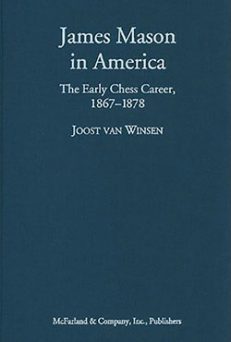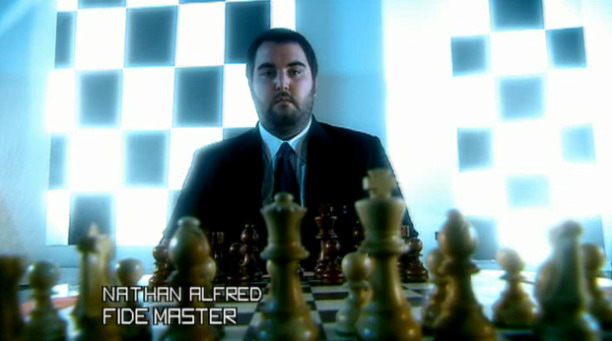Birthday of FM Nathan SW Alfred (16-iv-1980)
Tag Archives: 2020
Birthday of FM Nathan Alfred (16-iv-1980)
Birthday of FM Daniel Abbas (19-ix-1999)
Birthday of FM Daniel Abbas (19-ix-1999)
Birthday of FM Daniel Abbas (19-ix-1999)
Birthday of FM Daniel Abbas (19-ix-1999)
Side-Stepping Mainline Theory
Side-Stepping Mainline Theory : Gerard Welling and Steve Giddins
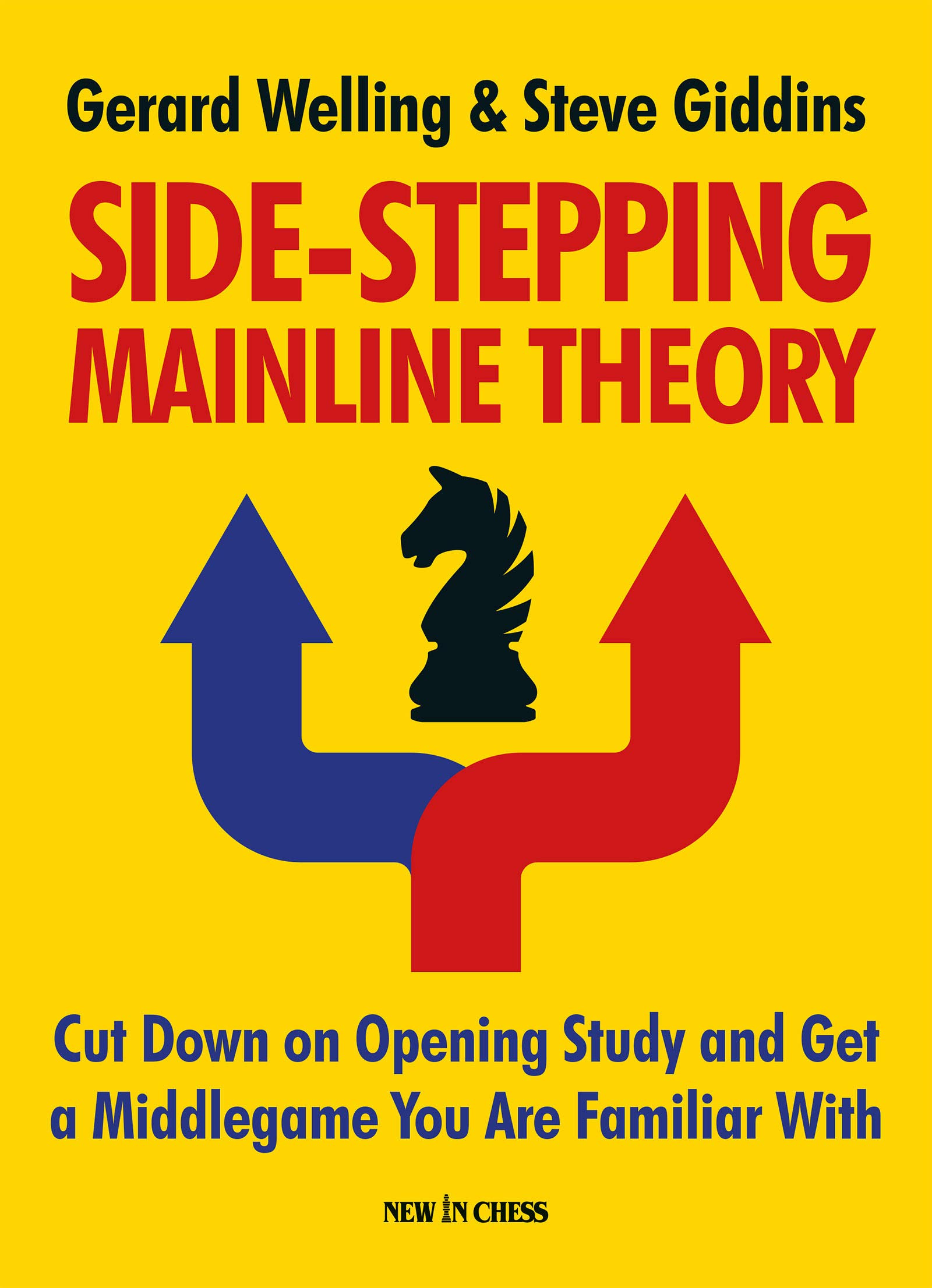
From the book’s rear cover :
“Spend more study time on what’s really decisive in your games!
The average chess player spends too much time on studying opening theory. In his day, World Chess Champion Emanuel Lasker argued that improving amateurs should spend about 5% of their study time on openings. These days club players are probably closer to 80%, often focusing on opening lines that are popular among grandmasters.
Club players shouldn’t slavishly copy the choices of grandmasters. GMs need to squeeze every drop of advantage from the opening and therefore play highly complex lines that require large amounts of memorization. The main objective for club players should be to emerge from the opening with a reasonable position, from which you can simply play chess and pit your own tactical and positional understanding against that of your opponent.
Gerard Welling and Steve Giddins recommend the Old Indian-Hanham Philidor set-up as a basis for both Black and White. They provide ideas and strategies that can be learned in the shortest possible time, require the bare minimum of maintenance and updating, and lead to rock-solid positions that you will know how to handle. By adopting a similar set-up for both colours, with similar plans and techniques, you will further reduce study time.
Side-stepping Mainline Theory will help you to focus on what is really decisive in the vast majority of non-grandmaster games: tactics, positional understanding and endgame technique.
Gerard Welling is an International Master and an experienced chess trainer from the Netherlands. He has contributed to NIC Yearbook and Kaissiber, the freethinker’s magazine on non-mainline chess openings.
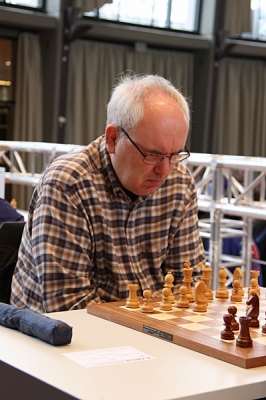
Steve Giddins is a FIDE Master from England, and a highly experienced chess writer and journalist. He compiled and edited The New In Chess Book of Chess Improvement, the bestselling anthology of master classes from New In Chess magazine.”
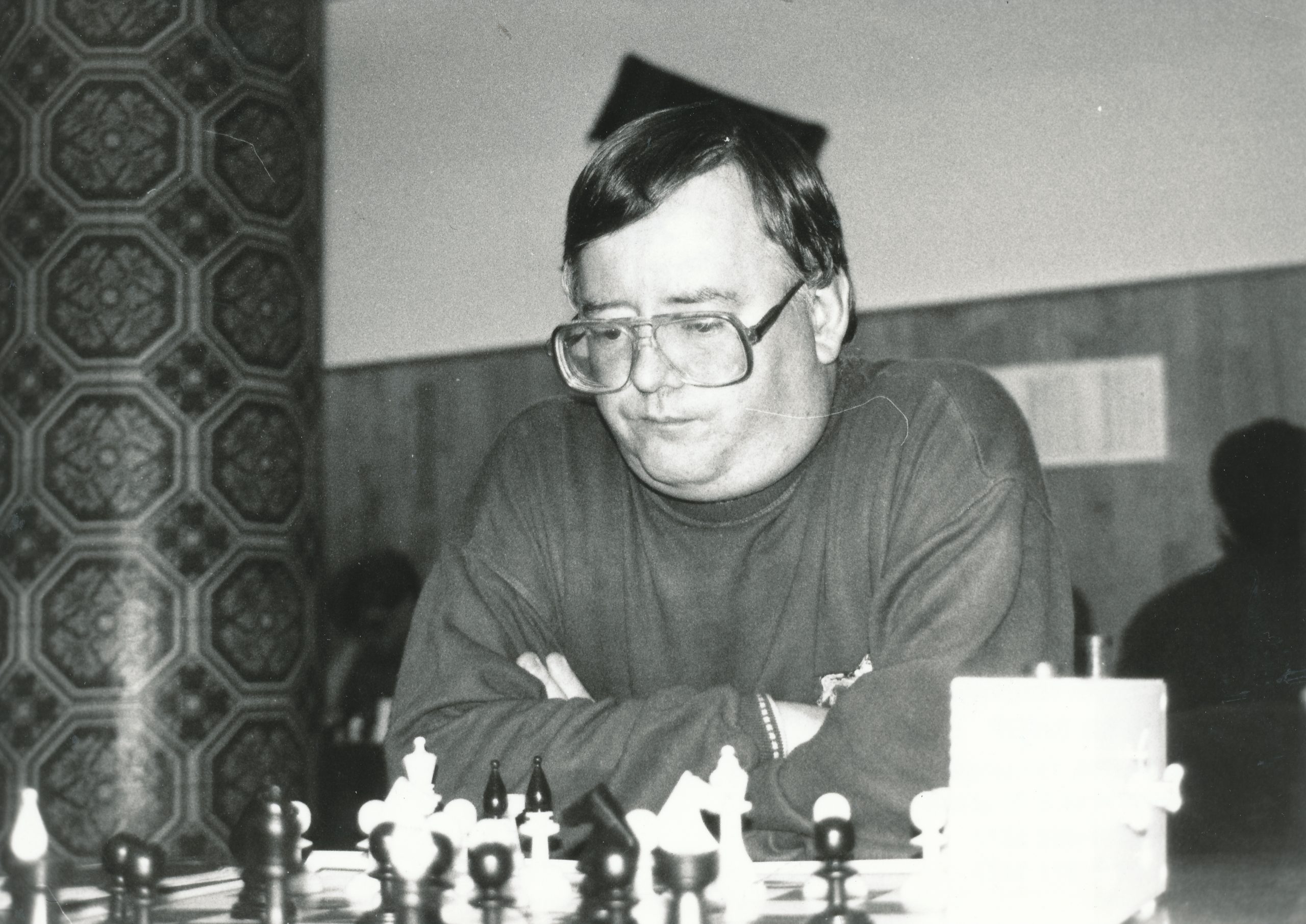
The authors have divided up the content into six chapters as follows:
- The keys to successful opening play
- The Old Indian against 1.d4
- The Old Indian against Flank Openings
- The Philidor against 1.e4
- The System as White
- Tables of the main variations
So, what we have here is somewhat unusual : this is a complete repertoire book for the same player of both the Black and White pieces using essentially the same structure. Precedents have been previously set using similar approaches with a combination of the Pirc and King’s Indian Defences combined with the King’s Indian Attack or reversed King’s Indian Defence but, nonetheless, this is an unusual and welcome approach to building a repertoire.
So the structure for Black is essentially :
which could be so-called Modern Philidor when white plays 1.e4 and The Old Indian when White defers e4
and the structure for White is :
which is essentially a Reversed Modern Philidor / Old Indian or more correctly An Inverted Hanham.
All of these structures are sound, resilient and reward manoeuvring play where the better play will win. More importantly a player familiar with these structures will enjoy understanding of the plans and ideas is likely to enjoy a considerable advantage on the clock. This is particularly true for the first player based on the rarity of the Inverted Hanham.
The authors have organised their material very logically showing the reader firstly the way to play for Black against almost anything and only then (when the structures are familiar) do they demonstrate the way for the first player. I’m sure players will be more comfortable playing these lines for Black since it might seem somewhat unnatural to play 1.e4 and then play slowly after that.
The authors use a standard model to explain these systems : they take 92 high quality games and analyse each one in detail. Combined with this is a clear description of the themes and ideas contained within the Black and White structures. This is very much an ideas based opening book rather than based on rote memorisation. One of the issues analysing these lines is that they are very transpositional compared to say the sequential and forcing lines of the Sicilian Dragon or Slav Defence. Chapter six helps enormously the reader to navigate their way through the transpositions especially for the Inverted Hanham.
Here is a game from Istvan Csom, an expert on this system :
As with every recent New in Chess publication high quality paper is used and the printing is clear. The book can easily be laid flat next to the board and does not require weights to prevent it from “self-closing” (a particular bugbear of ours !). Each diagram is clear and the instructional text is (mostly !) typeset in two column format, which, we find, enables the reader to maintain their place easily. Figurine algebraic notation is used throughout and the diagrams are placed adjacent to the relevant text.
In summary, Welling and Giddins have produced an out-of-the-ordinary book which fills a gap in the market : complete opening book not based on rote memorisation. The middlegame starts very early in these lines and the ideas for White are particularly intriguing. if you adopt these suggestions then your middlegame play will benefit hugely. This is probably not a book for hackers or those who have no patience : highly recommended !
John Upham, Cove, Hampshire, March 31st 2020

Book Details :
- Paperback : 272 pages
- Publisher: New In Chess (16th August 2019)
- Language: English
- ISBN-10: 9056918699
- ISBN-13: 978-9056918699
- Product Dimensions: 16.9 x 1.8 x 23.6 cm
Official web site of New in Chess

Chess Opening Workbook for Kids
Chess Opening Workbook for Kids : Graham Burgess
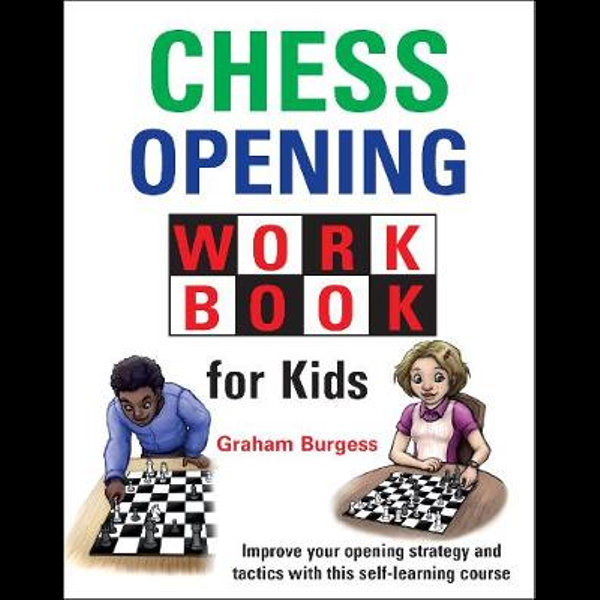
FIDE Master Graham Burgess needs no introduction to readers of English language chess books ! Minnesota, USA based, Graham has authored more than twenty five books and edited at least 250 and is editorial director of Gambit Publications Ltd. In 1994 Graham set a world record for marathon blitz playing and has been champion of the Danish region of Funen !

Readers may remember “101 Chess Opening Surprises” published in 1998, also by Gambit Publications, was well received and added to GKBs reputation for originality, accuracy and encyclopedic knowledge of openings.
Chess Opening Traps for Kids is the ninth in a series of “for Kids” books and is robustly (!) hardbound in a convenient size such that weights are not need to keep it propped open (unlike some A5 paperbacks) meaning studying with this book is more convenient than with many books. The layout and printing is clear (as you would expect with Gambit) with numerous diagrams. In essence, players under 18 (for whom this book is intended) will find it easy to dip in out of and it can be used without a board (although BCN would always recommend following each game on a “proper” board).
As you would expect with Gambit, the notation is English short form algebraic using figurines for pieces. Each diagram has coordinates and a “whose move it is indicator” (thank-you Gambit !); welcome for the intended junior readership.
This book follows on from the highly regarded (2018) Chess Opening Traps for Kids from the same author and reviewed here
The author divides the material into 11 chapters titled as follows :
- Warm-Ups
- Mate
- Double Attack
- Trapped Pieces
- General Tactics
- Hunting the King
- Development and the Centre
- Castling
- Does Bxh7+ Work?
- Advanced Exercises
- Tests
This is not a book about openings per se. It focuses more on tactics and traps and tactical ideas that happen very early in many games. It is not organised on a per opening variation basis and neither is there an index of openings. If that is what you want then this is not the right book for you.
However, this is much, much more than a book about openings…
Chapters 2 – 9 each kick-off with an introduction to the chapter’s theme followed by (in some cases) 60 example test positions where the theme can be exploited by an accurate move sequence : the student is invited to work-out this sequence. The chapter ends with detailed solutions to each test position.
Chapter 10 are exercises using any of the themes in the previous chapters but randomised and without any clue as to what the theme is. In general these are more challenging and serve as a test of what should have been learnt so far !
Chapter 11 contains 40 test positions some according to theme and rest without a clue. Following the solutions the student is invited to assess their strength at these exercises using a simple score table.
Here is an example from Chapter 3, Double Attack :
Example #5
White has just played 6c4?? Why was that a blunder ?
See the foot of this review for the solution should you need to.
For further insight you may use the “Look Inside” feature from Amazon here. Of course there are many worthy book retailers to be your supplier !
In summary, this is an excellent book with much original material presented in a clear and friendly way and therefore to be recommended. It is an ideal follow-up to Chess Opening Traps for Kids and we would advise studying Chess Opening Traps for Kids first and then move on to this workbook.
One negative comment we would make concerns the cover. “Never judge a book by its cover” we are told and you might look at this book cover and think it was suitable for say primary aged children. I would say not but I would suggest it suitable from secondary aged children. I would say strong juniors from 12 upwards would read this book and enjoy it.
We would like to see an index of openings from which the theme examples were obtained.
The title and cover might, perhaps, put off the adult club player market. However, the content is totally suitable for adult club players upto say 180 ECF or 2000 Elo.
John Upham, Cove, Hampshire, March 30th 2020

Book Details :
- Hardcover : 128 pages
- Publisher: Gambit Publications Ltd. (15th November 2019)
- Language: English
- ISBN-10: 1911465376
- ISBN-13: 978-1911465379
- Product Dimensions: 17.8 x 1.3 x 22.9 cm
Official web site of Gambit Publications Ltd.
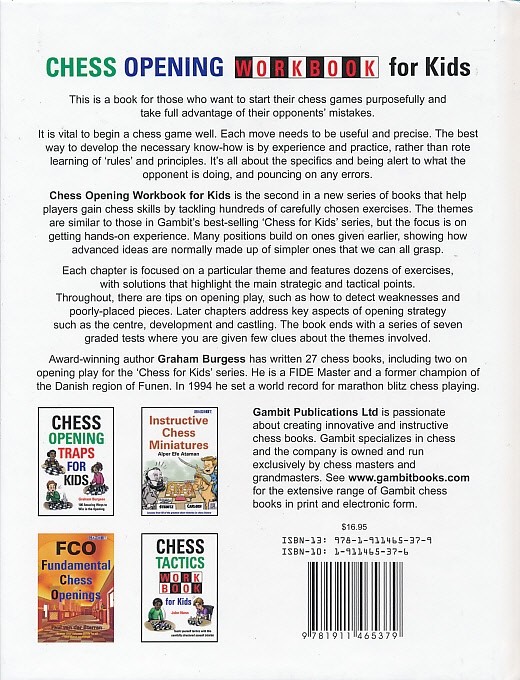
Solution to Example#5
The problem is similar to the Cambridge Springs Trap : 6…dxc4! wins a piece. After 7 Bxc4 Qa5+ the queen check picks up the loose bishop. This has even cropped up at super grandmaster level. The other key point is that White can’t unload his bishop with 7 Bxf6 because 7…cxd3 leaves two white pieces attacked.
James Mason in America : The Early Chess Career, 1867-1878
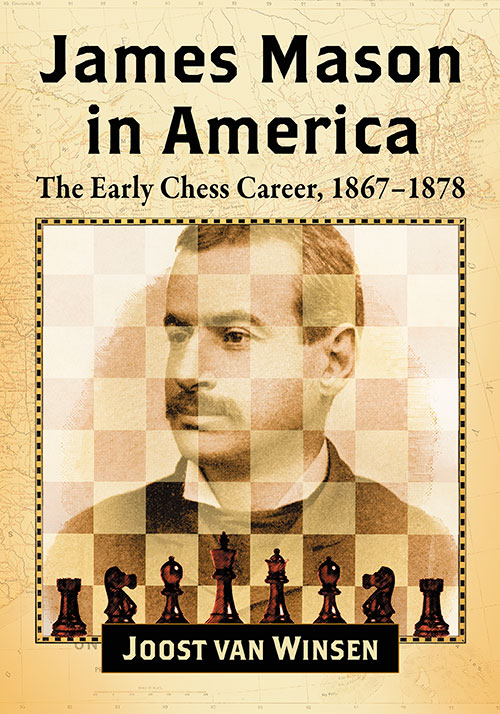
James Mason in America : The Early Chess Career, 1867-1878 : Joost van Winsen

Journalist Joost van Winsen lives in the Netherlands. He has previously written about American chess history of the Nineteenth century, and has contributed articles to ChessCafe.com and ChessArcheology.com.
James Mason was one of the mystery men of chess. We don’t even know for certain what his real name was. We know he was born in Kilkenny, Ireland in 1849, his family emigrated to the United States in 1861, and, somewhere round about the end of 1867, he turned up playing chess in New York.
Over the next decade he established himself as one of the strongest players in his adopted country before moving to England, where he died in 1905. His best result was at Vienna 1882, where he finished 3rd behind Steinitz and Zukertort in a field including most of the world’s strongest players, but, at least in part because of a fondness for drink, he never quite fulfilled his promise. In the 1890s he wrote several books, notably The Principles of Chess and The Art of Chess.
This book, a paperback reprint of a 2011 hardback, covers Mason’s early career.
The first four chapters provide a chronological account of Mason’s life in chess, enhanced with contemporary pen and ink drawings of many of his opponents and acquaintances. We then have a chapter about his writings and another about his style of play.
The second part of the book gives details of his match and tournament results, and, by the third part, we reach his games, about 200 of them (some sort of game numbering system would have been helpful). While Mason’s later style could sometimes be turgid, in his American years he favoured gambit play with the white pieces. Although the standard of play was, by today’s standards, not very high, there’s still plenty of entertainment value. His regular opponents included the British master Henry Bird, who was living in the United States at the time, along with many of the leading New York players of that era.
Van Winsen took the, perhaps controversial, decision only to use contemporary annotations rather than incorporate modern computer analysis. As he explained, “The author preferred the antique human judgment to the modern ‘truth’ of computer software.” The opening assessments make amusing reading. In 1873, for example, Orestes P Brownson considered 3. Nc3 in the French Defence a mistake, recommending 3. exd5 instead. In 1876, Zukertort, quoting Max Lange, criticized the Winawer variation of the French, preferring 3… Nf3 (sic: a rare notation error) because White is better after 3… Bb4 4. exd5.
How strong was Mason at this time? Jeff Sonas and Rod Edwards disagree by about 200 points: Sonas has him at 2700 strength and one of the best in the world, while Edwards has him some way down the list at 2500 strength. My money’s on Edwards, who includes casual as well as formal games in his calculations. Buy the book, play through the games yourself and see what you think.
The book then concludes with some appendices covering a variety of topics, a list of sources and six indexes.
As is to be expected with books from this publisher, James Mason in America is well researched, well written, well illustrated and well produced. I might have preferred it if the games and tournament results were included in the narrative rather than in separate chapters, but you may well disagree.
This book probably won’t improve your rating, but if you’re at all interested in 19th century American chess history, and, like me, you missed the original hardback edition, you’ll want to add this to your collection.
I’d certainly be interested in a book covering the rest of Mason’s life and career: James Mason in England?
Here’s a game to whet your appetite.
James Mason – Frederick Perrin New York (casual game) June 1873
1. e4 e5 2. Nf3 Nc6 3. Bc4 Nf6 4. O-O Nxe4 5. d4 d5 6. Bb3 Bg4 7. dxe5 Be6 8. Qe2 Bc5 9. c4 Nd4 10. Nxd4 Bxd4 11. Qd3 c5 12. cxd5 Bxd5 13. Ba4+ Ke7 14. Nc3 Nxc3 15. bxc3 Bxe5 16. Qe3 Kd6 17. Rd1 Qh4 18. f4 Bf6 19. Rb1 Qg4
20. Qxc5+ Kxc5 21. Ba3+ Kc4 22. Bb5+ Kxc3 23. Rbc1#
Richard James, Twickenham 27 March 2020

Book Details :
- Softcover : 384 pages
- Publisher: McFarland (30 October 2019)
- Language: English
- ISBN-10: 1476679436
- ISBN-13: 978-1476679433
- Product Dimensions: 17.3 x 2.3 x 24.4 cm
Official web site of McFarland
The cover of the eariler (2010) hardback edition is below :
